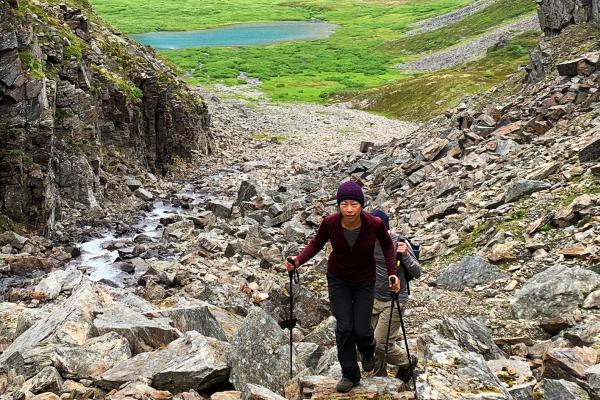Embarking on an Alaska backpacking trip promises breathtaking landscapes, untouched wilderness, and a truly immersive outdoor experience. However, the rugged terrain and challenging conditions demand a certain level of physical fitness. Whether you're a seasoned hiker or a first-time adventurer, getting in shape before your Alaska backpacking trip is crucial for maximizing enjoyment and safety. In this blog post, we'll guide you through a comprehensive fitness plan to ensure you're well-prepared for the demands of the Alaskan wilderness.
Cardiovascular Conditioning
Alaska's diverse terrain includes mountains, forests, and tundra, requiring strong cardiovascular endurance. Start with low-impact activities such as walking or cycling, gradually increasing the intensity and duration of your workouts. Incorporate aerobic exercises like running, swimming, or stair climbing to simulate the challenges you'll face on the trail. Aim for at least 30 minutes of moderate to high-intensity cardio at least three times a week.
Strength Training
Building overall body strength is essential for carrying a backpack, navigating uneven terrain, and tackling steep ascents and descents. Focus on compound exercises such as squats, lunges, deadlifts, and push-ups to target multiple muscle groups simultaneously. Include core-strengthening exercises like planks and Russian twists to enhance stability and balance. Aim for two to three strength training sessions per week, gradually increasing the resistance and difficulty.
Endurance Hiking
As your trip involves extended periods of hiking with a loaded backpack, it's crucial to simulate these conditions during your training. Start with shorter hikes on varied terrain and progressively increase both distance and elevation gain. Gradually add weight to your backpack building up to the weight you anticipate carrying on your Alaska trip. This helps your body acclimate to the added load and strengthens the muscles used during backpacking.
Flexibility and Mobility
Alaska's terrain will present obstacles that require agility and flexibility. All of our trips are off trail, wilderness travel and that changes everything. Being able to hike all day on a nice trail is way different than walking over rough ground, moraine, glacier ice, brush, rock fields and more. So you need to get your body moving in ways it's not used to moving Incorporate dynamic stretching routines into your warm-up to improve flexibility and reduce the risk of injury. Yoga or Pilates can enhance balance, stability, and joint mobility, providing an excellent complement to your strength and cardio workouts.
But most of all log some time on off-trail ground if at all possible. You will find a whole new set of muscles coming into use.
Conclusion
Preparing for an Alaska backpacking adventure involves more than just packing the right gear; it requires conditioning your body for the physical demands of the wild. By incorporating cardiovascular workouts, strength training, endurance hikes, flexibility exercises, and altitude training into your routine, you'll be well-equipped to tackle the challenges and savor the wonders that Alaska's backcountry has to offer. Remember, a well-prepared body not only enhances your experience but also ensures a safer and more enjoyable journey through the Last Frontier. Lace up those hiking boots and get ready to explore the untamed beauty of Alaska!




